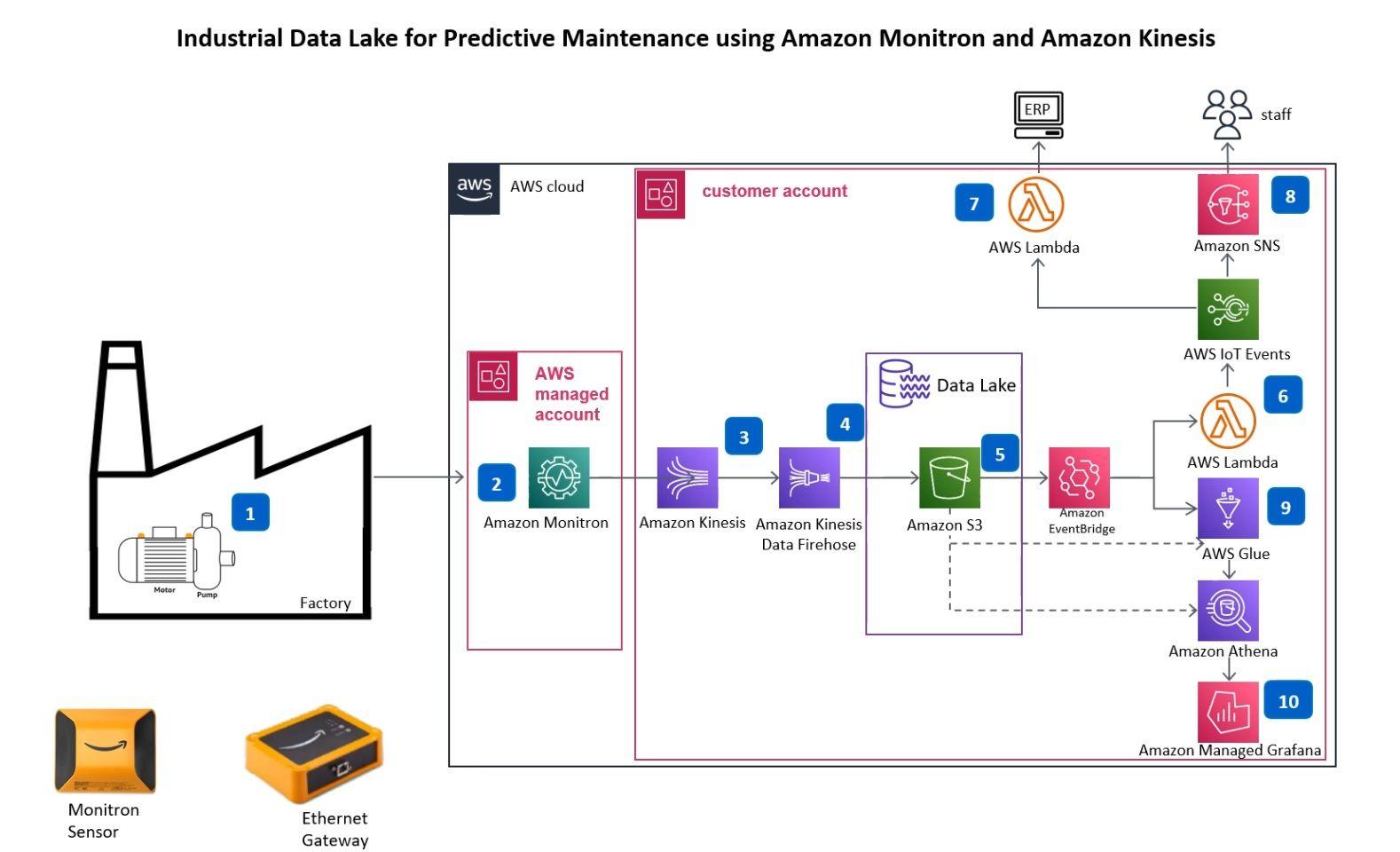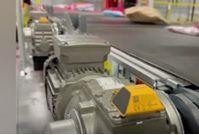
Predictive Maintenance using Monitron
Decoding architecture of Predictive maintenance using Monitron
Published Jan 21, 2024
- Lets us decode the architecture for Industrial Data lake for predictive maintenance using Monitron & Kinesis
- End-to-end system that uses machine learning to detect abnormal conditions in factory equipments such as fans, motors, pumps, etc.
- It captures information about temperature & vibration
- A maintenance strategy that uses software to monitor equipment performance and health.
- It uses real-time data to anticipate when maintenance should be performed.
We need 4 things to make this setup work.
- A Sensor (hardware) that captures the data of equipments (temperature, vibration)
- A gateway (hardware) to securely transfer data to AWS
- A service (AWS service) that analyzes the data using machine learning (ML)
- Monitron App (mobile and desktop app) to set up the devices and track the condition of your machinery
The first step is to install Amazon Monitron sensors on the equipment that you want to monitor in a factory.

- You can then configure the sensor in Amazon Monitron service by setting up a project.
- Next step is to create Amazon Kinesis Data Streams using Amazon Monitron as the data source.
- You can configure Amazon Kinesis Data Streams from Amazon Monitron managed account to customer account.
- Its serverless & suitable for Real-time data ingestion, processing & analysis
- Next step is to configure the Amazon S3 bucket as delivery destination of Amazon Kinesis Data Firehose. Amazon S3 serves as storage for industrial data lake. Kinesis data fireshose Capture, transform, and load data streams into AWS data stores for near real-time analytics with existing business intelligence tools.
- Then we configure Amazon S3 notifications to send events to the Amazon EventBridge destination.
- Fully managed service
- Provides a reliable, scalable, and secure way to process and route events between applications and services.
- Helps to quickly integrate applications, services, and data across multiple cloud environments
- Next step is to configure an AWS Lambda function as the target of Amazon EventBridge destination rules. The Lambda function processes the Amazon S3 event and sends it to an AWS IoT Events state machine.
- It enables to monitor equipment or device fleets for failures or changes in operation
- Can trigger actions when such events occur.
- AWS IoT Events also responds to sensor warning state and creates an ERP work order using AWS Lambda.
- AWS IoT Events responds to the sensor warning state and notifies personnel using Amazon Simple Notification Service (Amazon SNS) topic via SMS, mobile push, and email. This email alerts can be sent to maintenance , production personnel.
- Next we connect the AWS Glue data pipeline to Amazon S3 bucket and schedule the Glue job via Amazon EventBridge. Amazon Athena then queries S3 data as reports and metrics.
- Why to connect AWS Glue data pipeline to S3 Bucket
- AWS Glue can access data stored in Amazon S3 buckets, and can handle data in various formats.
- This makes it suitable for scenarios where data is stored in a centralized repository
- AWS Glue and S3 provide a flexible, scalable platform for ETL. With a few clicks, you can create a serverless data pipeline to structure and process data for analytics
We can also visualize IoT metrics and state from Athena queries using Amazon Managed Grafana.
Amazon Managed Grafana is a fully managed service for Grafana, a popular open-source analytics platform that enables you to query, visualize, and alert on your metrics, logs, and traces.
- So this was the architecture of an industrial data lake for predictive maintenance. I hope this was useful. Thanks
